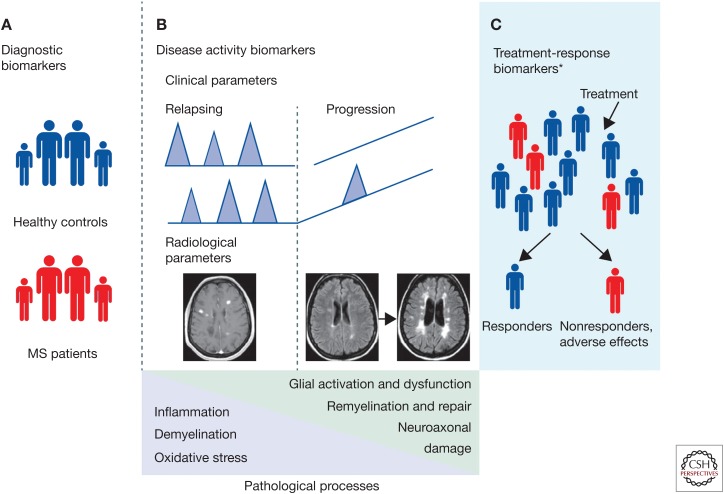Figure 1.
Types of biomakers in multiple sclerosis (MS). (A) Diagnostic biomarkers comprise those that could distinguish patients with MS from healthy controls and other diseases. (B) Disease activity biomarkers comprise biomarkers measured in patients with relapsing remitting courses in whom disease activity can be measured by clinical (presence of relapses and accumulation of disability) or radiological (e.g., number of gadolinium-enhancing lesions; see magnetic resonance image [MRI] on the left) parameters. This group also includes biomarkers measured in patients with progressive disease courses such as primary progressive or secondary progressive disease, or patients in the transition phase between relapsing remitting and secondary progressive courses. In these patients, disease activity can be measured by the rate of disability progression or development of brain atrophy (see MRIs on the right). In patients with MS, these biomarkers will be associated with the different pathophysiological processes that have been described. (C) Treatment-response biomarkers comprise biomarkers measured in patients who are receiving MS therapies. Based on clinical or radiological responses to treatments these can be grouped as responders or nonresponders (data based on Comabella and Montalban 2014).

